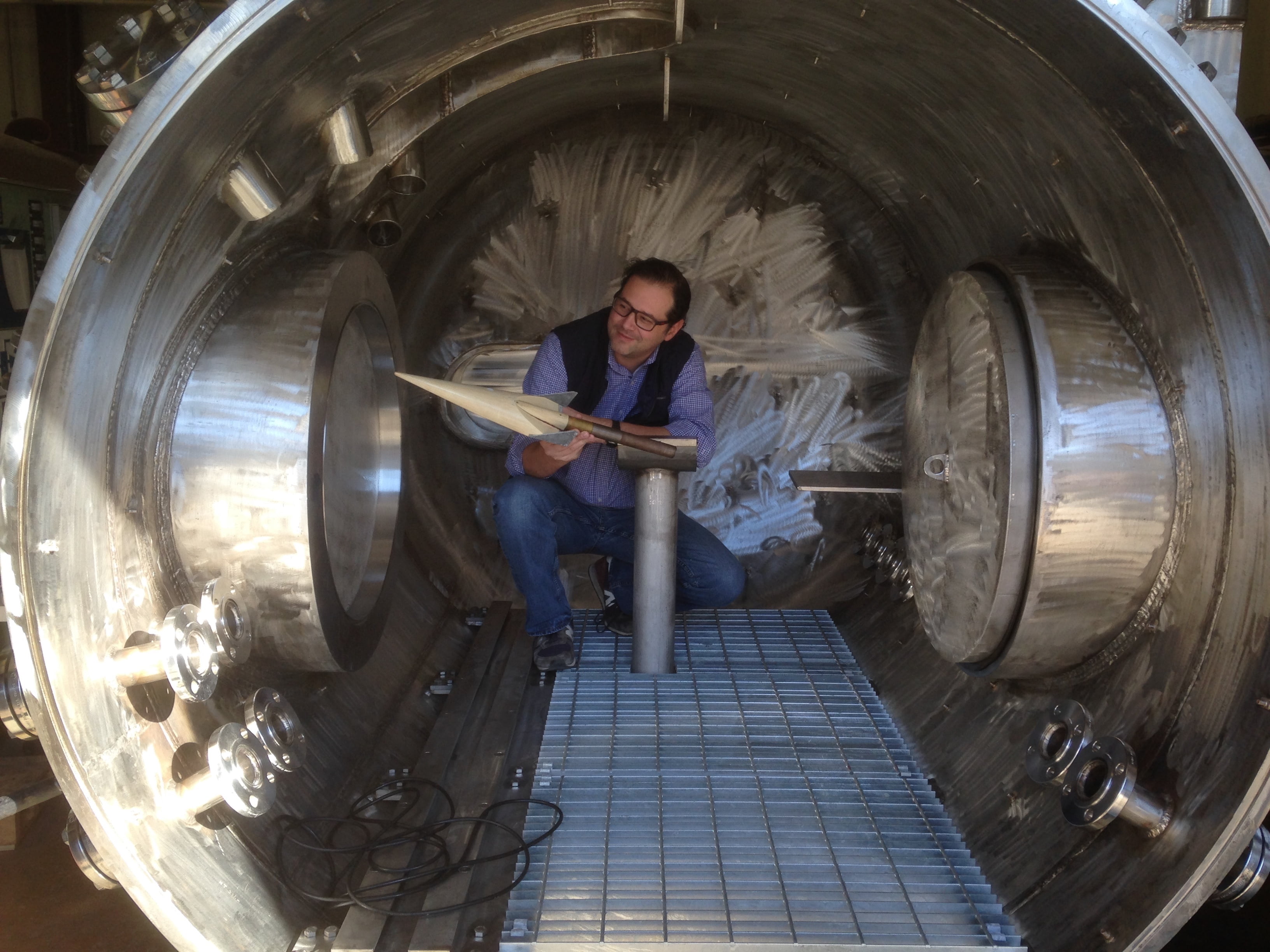UTA aerospace engineer earns two grants to enhance nation’s only university-based, arc-heated, hypersonic wind tunnel
The University of Texas at Arlington’s new arc-heated, hypersonic wind tunnel, one of just a handful of its kind in the United States and the only one at a university, will come online within a couple of months and immediately be used in Navy grants that support the development of heat shields for hypersonic vehicles and advanced laser-based measurements of plasma flow.

Luca Maddalena, UTA aerospace engineering associate professor and director of the Aerodynamics Research Center, won a pair of Office of Naval Research grants totaling more than $1.5 million.
The first grant is a three-year, $820,000 award for fundamental research on characterizing the arc-jet plasma flow and the second is a $690,000 Defense University Research Instrumentation Program, or DURIP, grant to purchase a femtosecond laser system, which will be the only one of its kind to be used in an arc-heated wind tunnel in the United States. A femtosecond is one quadrillionth, or one millionth of a billionth, of a second.
Maddalena previously earned a $1.01 million DURIP grant to support the design and construction of the new wind tunnel.
“Our research is making a critical contribution to the development of key technologies for hypersonic vehicles. These grants show that the Aerodynamics Research Center is at the cutting edge of research in this area and our long-term vision is being rewarded, first through our world-class facility and now with this additional funding to make the facility even more exclusive in its capabilities,” Maddalena said.
When hypersonic vehicles cruise through the atmosphere at 3,500 miles per hour or faster, friction causes them to heat up to more than 8,000 degrees Kelvin, or about 15,000 degrees Fahrenheit. At these temperatures, air also undergoes chemical reactions and nitrogen and oxygen molecules start to dissociate and form a reacting mixture of atomic oxygen and nitrogen, plus regular molecular oxygen and nitrogen. This superheated air, or plasma, flows around the vehicle and evolves as it does so, making it necessary for engineers to calculate simultaneously its chemistry and fluid dynamics to develop an effective heat shield.

Current models are not able to accurately predict what will happen in every situation, so Maddalena and his team will use the fundamental research grant to develop diagnostic techniques to characterize the plasma flow, thereby improving the understanding of the relationship between arc-jet test and flight environments.
“It generally takes about 10 years to develop a new heat shield for a hypersonic vehicle and part of it is due to the uncertainties associated with the arc-jet plasma flow,” Maddalena said. “In other words, you don’t know at what exact conditions you’re testing.”
For the Navy’s specific applications, air density and skin friction on the hypersonic vehicle come into play, which can drastically change the performance of the thermal protection system. According to Maddalena, UTA is the only U.S. university with the ability to reproduce significant skin friction on the test articles with its facility.
Since the flow in the wind tunnel will be heated beyond temperatures at which any type of physical measurement device placed in it would survive, the femtosecond laser system will allow Maddalena and his team to non-intrusively measure the temperature and composition of the plasma flow. The laser system is so advanced that it has never been used in an arc-jet facility and will take six months to build.
The wind tunnel is housed in UTA’s Aerodynamics Research Center, which boasts low-speed, transonic and supersonic wind tunnels and a hypersonic shock tunnel in addition to the arc-jet tunnel.
“Dr. Maddalena continues to make a name for himself and for UTA, thanks to state-of-the-art diagnostics capabilities and the outlook for seminal contributions to fundamental research in hypersonics,” said Erian Armanios, chair of the Mechanical and Aerospace Engineering Department.
Maddalena’s research continues UTA’s long history of leadership in aerodynamics and is an example of data-driven discovery, one of four themes of the University’s Strategic Plan 2020, said UTA Engineering Dean Peter Crouch.
“This is a tremendous opportunity to highlight excellence and national leadership in hypersonics. Dr. Maddalena’s research is at the cutting edge of our developing fundamental understanding that is critical to U.S. leadership in the field. It’s wonderful to see his research being acknowledged nationally and internationally as integral to meeting these challenges,” Crouch said.